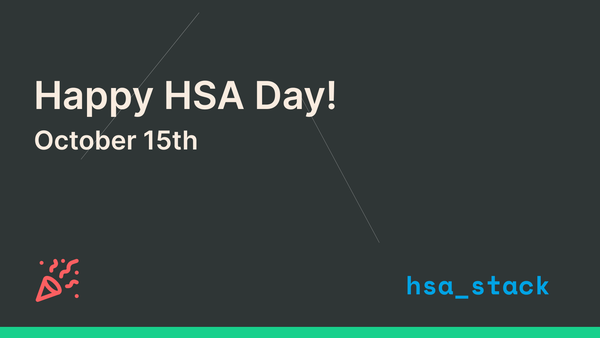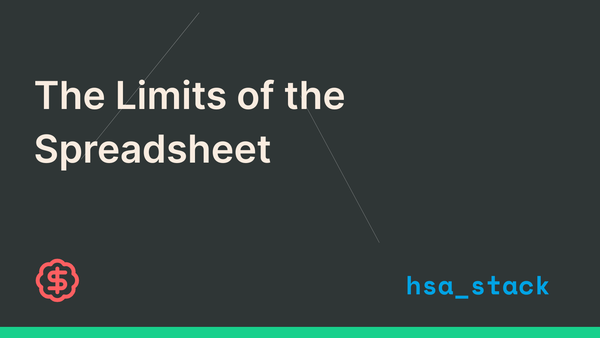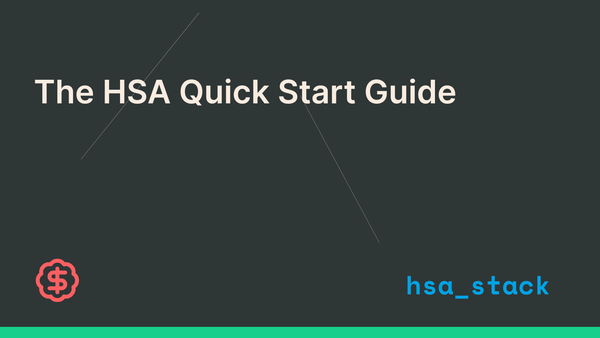The Biggest Misconception About Your HSA
It's time to stop thinking of your HSA as a medical spending account. It's one of the most powerful, triple tax-advantaged retirement vehicles you have. This guide reframes your strategy from short-term spending to long-term, tax-free growth.

For most people, a Health Savings Account (HSA) is simply a tool to pay for current medical expenses with pre-tax dollars. You get sick, you swipe the HSA card, and that's the end of the story. While that’s a valid use, it’s like using a race car just to drive to the grocery store. You're missing out on its true power.
The most financially savvy individuals, the ones who optimize every dollar, understand a crucial secret: an HSA is not just a healthcare account, it's arguably the most powerful retirement account in existence. When used strategically, it offers a rare "triple tax advantage" that no other account can match:
- Tax-Deductible Contributions: The money you put in is tax-deductible, lowering your taxable income for the year.
- Tax-Free Growth: Your contributions can be invested and grow completely tax-free.
- Tax-Free Withdrawals: You can withdraw the money tax-free for any qualified medical expense, now or decades in the future.
This trifecta of tax benefits makes the HSA a formidable tool for building long-term wealth. The key is to shift from a "spend-it-now" mentality to a "grow-it-for-later" strategy.
A New Framework for Your HSA
So, how do you make this shift? It starts by decoupling your immediate medical spending from your HSA contributions.
Step 1: Create a Separate Medical Expense Fund
Instead of using your HSA for every prescription or co-pay, consider opening a separate, dedicated High-Yield Savings Account (HYSA) specifically for medical costs. This creates a buffer for your monthly cash flow, so an unexpected doctor's bill doesn't disrupt your budget.
Think about it this way: if you recently switched to a High-Deductible Health Plan (HDHP) to become eligible for an HSA, your monthly health insurance premium is likely lower than what you paid before. Calculate that monthly saving and automate a transfer for that exact amount into your new medical HYSA. You were already used to that money leaving your checking account; now, it’s building a dedicated fund for out-of-pocket medical needs.
This simple change allows you to pay for current medical expenses from your HYSA while leaving your HSA funds untouched, free to grow and compound tax-free for the long term.
Step 2: Reimagine Your HSA Contribution as a Retirement Contribution
With a separate fund for immediate medical needs, you can now view your monthly HSA contribution for what it should be: a deposit into a retirement account.
Stop thinking of it as part of your healthcare budget. Start thinking of it as a core component of your wealth-building strategy. This mental shift is critical. You're no longer just "saving" for healthcare; you're investing for your future.
Step 3: Rethink Your Financial Order of Operations
Many people follow a "financial order of operations" to prioritize their savings and investments. This typically involves steps like getting a 401(k) employer match before anything else.
If you're serious about optimizing, consider moving your HSA contribution up in that priority list. Because of its unique triple tax-advantaged status, maxing out your HSA may be one of the most impactful moves you can make for your retirement after securing an employer match. It’s a direct, tax-efficient investment in your future self.
Step 4: Plan for Growth
Make it a goal to increase your HSA contributions systematically. Each time you get a pay raise, a portion of that increase should go directly to your HSA. Additionally, the IRS typically increases the maximum annual contribution limits each year. Stay on top of these changes and adjust your contributions accordingly to maximize your investment potential.
The Long-Term Payoff: The Delayed Reimbursement Strategy
This mindset shift—from spender to investor—unlocks the delayed reimbursement strategy. By paying for current medical costs out-of-pocket and meticulously saving the receipts, you are building a "bank" of qualified expenses.
Decades from now in retirement, your HSA can have a significant balance from years of contributions and tax-free investment growth. At that point, you can use the receipts you saved from years prior to make tax-free withdrawals, effectively turning your HSA into a tax-free emergency fund or income source. This provides incredible flexibility and control over your financial future.
The Bottom Line
Your HSA is a chameleon. It can be a simple spending account, or it can be a supercharged retirement vehicle. The difference lies entirely in your mindset and your strategy. By building a separate fund for today's medical costs, you empower your HSA to do what it does best: grow, compound, and secure your financial well-being for decades to come.




